Get The New Year Started Off Right. How to Reach Your Goals in 2022
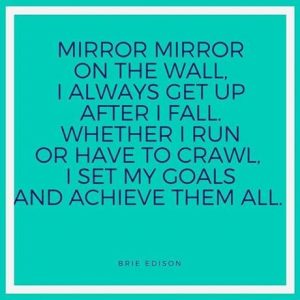 “Do you have a New Years resolution?” Once January hits, it’s a common question that strikes fear in the heart of many. The New Year means a fresh start, a clean slate. Yet, so many of us feel like we still haven’t reached our goals from last year, let alone ready to tackle what we want to achieve in 2022.
“Do you have a New Years resolution?” Once January hits, it’s a common question that strikes fear in the heart of many. The New Year means a fresh start, a clean slate. Yet, so many of us feel like we still haven’t reached our goals from last year, let alone ready to tackle what we want to achieve in 2022.
Each year, you start out motivated, enthusiastic and with the best intentions. You’ve identified a goal (or two) and this time, you’re REALLY going to put in the work, see it through, and accomplish your goal once and for all. Then “things” start to get in the way, like time, finances, and life. All those good intentions are replaced with excuses and, before you know it, that goal you set out to achieve seems impossible to accomplish.
How can you make this year different? It’s time to put pen to paper and outline what you hope to achieve. Writing out your goals is a great way to get all those ideas out of your head and into a format where you can break them down, tweak them and provide yourself with some accountability. Here are four key tips to get started:
1) Tackle Scary Thoughts and Acknowledge Your Fears. There’s an acronym for FEAR: False Evidence Appearing Real. Yes, your goal may seem scary and you start to doubt yourself. We’ve all experienced fear, but the key is to outline where your fears lie, what fears are true and what aren’t based in reality. Write down, “what’s the worst that could happen?” And then, “what’s the best that could happen?” When you come up with answers for each, you’ll see that the pros always outweigh the cons.
2) Break Down the Various Steps to Get There. Let’s say you want to save money to take your dream vacation. You break your goal down further and decide to start by saving $1,000 over the next three months. Now, here’s how you can break it down even more to make it actionable, remembering that you don’t have to tackle every task at once:
- Write down how much money you make each month after taxes
- Write down all the places that you spend money over the course of a month or several months
- Look at all the places you spend money and figure out where you can spend less – cut back on daily coffee runs, streaming services and other similar places
- Examine if there are any ways you could earn extra money over the next few months
3) Schedule Time to Work on Tasks. Scheduling each task is a great way to manage your list because you have a plan of when to tackle a little bit of your goal. Maybe it’s 15 minutes in the morning and you set a timer. Or pull out your calendar and write down a designated time. Put aside the “someday I’ll do it” and just accomplish one task. However small it may seem, the act of doing SOMETHING can build confidence and start to put a goal-achieving plan into action.
4) Make a Plan for When Life Gets In the Way. Life can throw you curve balls, but don’t let those challenges derail your goals. There’s power in planning for obstacles in advance. Having a contingency plan prevents frustration and enables you to keep moving forward.
There are so many things that can stop us from making our goals a reality. But with the right tools and mindset in place, we can calm the voices in our head saying we can’t do it and move towards meaningful change. Make 2022 the year that you accomplish your goals with the help of a coach who can listen, advise and help keep you accountable. Leah M. Joppy and Associates is ready to help! Call us at 301-670-0051 or email us at leah@lmja.com and let’s work together to make your goals a reality.
The Difference Between Resolutions and Goals
 The calendar has changed to 2022 and you’ve vowed to make some lofty changes: healthier, more productive, better grip on your finances. The New Year is ripe with promise. All it will take is to make some resolutions. Or maybe some goals. But wait. What exactly is the difference? Turns out, quite a bit.
The calendar has changed to 2022 and you’ve vowed to make some lofty changes: healthier, more productive, better grip on your finances. The New Year is ripe with promise. All it will take is to make some resolutions. Or maybe some goals. But wait. What exactly is the difference? Turns out, quite a bit.
Resolutions are really just a statement of intent. They’re not as powerful as goals, because goals, when set correctly, include a level of accountability and measurement to move you towards a desirable outcome. Let’s looks at few examples:
Resolutions:
- To spend less time online
- To lose weight
- To read more books
- To save money
Now, let’s turn those resolutions into more powerful goals:
- I will check my email three times per day and will reply to everything immediately. I will spend a maximum of 45 minutes a day on social media and will set a timer to keep myself accountable.
- I will keep a food log of everything I consume in a day to see where I can cut back on sugar, processed foods, etc. I will only order take-out or eat in a restaurant one time per week. I will schedule time to exercise 3 times per week.
- I will choose a book to read each month and immediately order it from Amazon or check it out from the library. I will schedule time to read 1 hour per day.
- I will schedule time to review my finances and see where I can cut back on spending. I will only buy my coffee 2 times per week and will schedule time in the morning to make it at home on the other days.
That’s a powerful difference. Setting goals is so much more attainable because they’re part of a journey. You’re setting a path towards reaching a better place in your life.
Thomas Edison said, “Many of life’s failures are people who did not realize how close they were to success when they gave up.” Success is within your reach and with the right coach to help you along your path, there’s no telling what 2022 has in store for you! Leah M. Joppy and Associates can work with you to identify your goals and create a realistic action plan. We’ll also support you through every step of the process by providing accountability and helping you overcome obstacles. Call us at 301-670-0051 or email us at leah@lmja.com and let’s work together to make your goals a reality.
Coaching To Expand Thinking
 When most of us face a challenge, our typical response is to fall back on the old ‘tried and true’ way of doing things. This is usually what we’ve learned has worked for us in the past. However, Oliver Wendell Holmes may have put it best when he said, “Man’s mind, once stretched by a new idea, never regains its original dimensions.” Now is an ideal time to take a look at how we think and how those thought patterns relate to our personal and professional development. Are you feeling stuck? Do you feel like your current way of thinking holds you back from your goals and living your best life? Over time, experiences and messages can ‘fix’ how you see yourself and result in negative emotions, quickness to give up, avoiding challenges and feelings of self-doubt. Fortunately, this doesn’t have to be the way you live your life.
When most of us face a challenge, our typical response is to fall back on the old ‘tried and true’ way of doing things. This is usually what we’ve learned has worked for us in the past. However, Oliver Wendell Holmes may have put it best when he said, “Man’s mind, once stretched by a new idea, never regains its original dimensions.” Now is an ideal time to take a look at how we think and how those thought patterns relate to our personal and professional development. Are you feeling stuck? Do you feel like your current way of thinking holds you back from your goals and living your best life? Over time, experiences and messages can ‘fix’ how you see yourself and result in negative emotions, quickness to give up, avoiding challenges and feelings of self-doubt. Fortunately, this doesn’t have to be the way you live your life.
Cultivating a Growth Mindset
What’s the difference between someone with a “growth” mindset and a “fixed” mindset? Those with a growth mindset understand that they can develop abilities and adapt them to different situations. They also understand that mistakes happen and they have a stronger sense of resilience as a result. A growth mindset is important because it can actually change what you strive for and what you see as success. The hand you’re dealt is just the starting point for development. Here are a few ways to get started down the growth mindset road:
- Acknowledge and embrace imperfections
- View challenges as opportunities
- Replace the word “failing” with the word “learning”
- Disassociate improvement from failure
- Value the process over the end result
- Place effort before talent
Expanding your thinking capacity and moving away from a fixed mindset can be challenging, but the rewards are limitless. When you change the way you look at things, the things you look at change. Leah M Joppy and Associates can help you assess your current ways of thinking and determine steps you can take to cultivate a mindset for growth. Call us at 301-670-0051 or email leah@lmja.com.
For more reasons why someone may decide to work with a coach, read this article.
Struggles of Managing Offsite Employees
The past year has continued to rock the way we do business and forced us to pivot yet again as new and unexpected challenges were thrown our way. One of the biggest areas where many leaders are still struggling is managing offsite employees. Remote and hybrid teams are here to stay and leading them takes a different set of skills.
What are some of the top issues managers report when it comes to leading remote employees? Here’s a look at four of the top struggles. Do any sound familiar to you?
- Internal Communication Problems: There’s no question that communication is a huge issue when managing remote employees. According to a study by Gallup, 71% of remote employees reported that they’re not actively engaged with their business. And 85% reported the communication they receive on the job isn’t enough.
- Supporting Employees From a Distance: The relationships you developed working in an office can be hard to maintain when you’re staring at each other on a screen every day. Some workers are more forthcoming with the challenges they’re experiencing on the job or at home, while others are more private and many be struggling in silence. Some of the biggest struggles workers report is loneliness, collaboration difficulties, distractions at home and staying motivated. Employee wellness has become a huge issue for organizations.
- Lack of a Company Culture: Those face-to-face interactions we were so used to a couple years ago are quickly becoming a thing of the past. It’s also made building and maintaining company culture even more challenging. A lack of company culture can mean there’s very little comradery, workers may not feel heard or recognized for a job well done and so much more.
- Tracking and Measuring Performance: Managers are faced with two big challenges when it comes to tracking performance: making sure employees are completing their work and that they’re using their time efficiently and appropriately.
Organizations also report challenges with scheduling and time zone issues, onboarding new remote workers and developing and maintaining trust.
The struggles that arise from managing a team while you’re physically apart can ruffle the feathers of even the most seasoned leader. What challenges are you experiencing with leading a remote team? How have issues changed or developed over the last year? Leah M Joppy and Associates can work with you to identify challenges, develop a practical and reasonable action plan and collaborate with both leaders and employees to implement it. Follow through is also important, so we continue to check in on what’s working, what’s not and what we can do to fix it. Call us at 301-670-0051 or email leah@lmja.com to learn more.
What To “Do” and “Not Do” When Managing Remotely
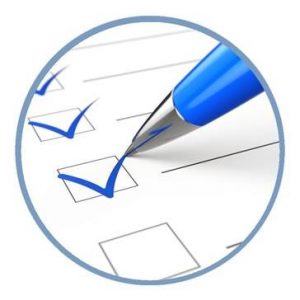 From Zoom “fatigue” to trying to onboard new employees from a distance, the challenges of leading offsite employees can feel vast and complicated. Just when you think you get one area figured out, another issue pops up and needs attention. We touched on a few common struggles in our previous article, but how do you start to address them? Ignoring the issues or telling yourself that “things will get better with time” can ultimately lead to higher employee turnover, especially in today’s tight labor market. A proactive approach and implementing improvements not only keep your organization moving forward, but also shows your remote team members that you’re engaged in their well being.
From Zoom “fatigue” to trying to onboard new employees from a distance, the challenges of leading offsite employees can feel vast and complicated. Just when you think you get one area figured out, another issue pops up and needs attention. We touched on a few common struggles in our previous article, but how do you start to address them? Ignoring the issues or telling yourself that “things will get better with time” can ultimately lead to higher employee turnover, especially in today’s tight labor market. A proactive approach and implementing improvements not only keep your organization moving forward, but also shows your remote team members that you’re engaged in their well being.
Let’s start with a few of the basics. We’ve outlined a few “dos and don’ts” below. Maybe you’re already using some of them or perhaps they’re a good reminder of where you need to improve:
- DO set immediate and clear expectations. And make sure everyone knows what they are!
- DO schedule regular team meetings and make them a priority (no regular cancellations, please).
- DO engage directly with employees as often as possible.
- DON’T just have a communication strategy in place. Document it and share it. Everyone needs to be on the same page.
- DON’T just encourage feedback, make it possible. And listen to it!
- DON’T micromanage and make employees feel like they’re not trusted.
- DO have an open-door policy and set aside time for one-on-one conversations.
It’s easy to say “communicate more with your employees” or “set clear expectations”, but how do you get started when you’re already feeling overwhelmed? That’s where working with a coaching team like Leah M Joppy and Associates can help. Maybe you’ve established a routine that your team is comfortable with, but you’re struggling to improve your company culture. Or perhaps your regular team meetings are running like clockwork, but you’re having difficulty with one-on-one communication. We can help you figure out your primary challenges and work with you and your team to make remote working a less stressful and more productive experience for all!
Ready to get started for 2022? Call us at 301-670-0051 or email us at leah@lmja.com.
PLANNING FOR THE NEW YEAR
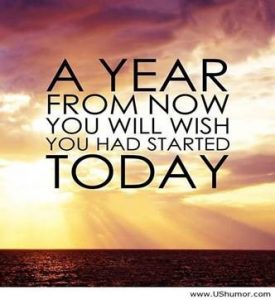 What a long, strange ride it has been in the last few years! If the last few years have taught us one major lesson, it’s that plans can get derailed and we must be willing to adapt. They’ve also given us an opportunity to assess our way of doing business within a new framework. For example, what are some of the biggest lessons you’ve learned this past year? What are some of the biggest challenges facing your organization over the next year and beyond? What are your strengths and weaknesses to meet those challenges?
What a long, strange ride it has been in the last few years! If the last few years have taught us one major lesson, it’s that plans can get derailed and we must be willing to adapt. They’ve also given us an opportunity to assess our way of doing business within a new framework. For example, what are some of the biggest lessons you’ve learned this past year? What are some of the biggest challenges facing your organization over the next year and beyond? What are your strengths and weaknesses to meet those challenges?
You may have already developed a strategic plan for the year, but if we’ve learned anything, it’s that plans can change quickly. That’s why it’s important to consider the following when drafting a plan for the next year:
- Embrace Reality: While we’re all ready for the pandemic to be over, we’re still going to be doing business differently for a while. You may want to keep some of the changes you made over the past year. Or based on what you’ve learned over the past several months, you may need to make additional plans based on existing conditions.
- Be Adaptable: Organizations that were able to pivot quickly when the pandemic began experienced less impact than those who struggled through the process. Flexible processes and adaptable strategies are your best course of action if things worsen before they improve.
- Make Your People A Top Priority: People are the core of your department and now, more than ever, you need to take care of them. This includes physical and mental health, as well as work-life balance. With so many people working from home, communication should be a priority. What’s worked well over the past several months? What areas could use improvement?
- Plan For The Unusual: A long-term strategy that includes various scenarios helps you navigate challenges. For example, additional equipment and tools for remote workers, plans for employees who may be out due to the coronavirus and workers who need flexibility due to school closures are all issues to consider.
Planning in advance is one way effective leaders avoid the stress of falling behind, particularly during times of uncertainty. Leah M. Joppy and Associates has worked with numerous firms to draft annual plans that align and inspire teams to reach their goals for the coming year – and beyond. Then we help you put it all into action. For more information, contact us at 301-670-0051 or email leah@lmja.com.
What Makes A Leader Effective?
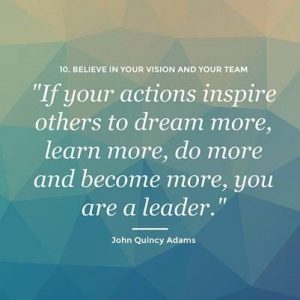 There are so many differences between being a boss and being a leader. Bosses command, while leaders influence. Bosses discipline, but leaders act as a mentor. That’s just the beginning. Strong leadership matters and it’s the backbone to every successful department. Leaders are responsible for more than just delegating tasks and monitoring employees’ progress. To be effective in this role, true leaders must understand each staff member’s overall goals, strengths and weaknesses and then use this information to build a strong team.
There are so many differences between being a boss and being a leader. Bosses command, while leaders influence. Bosses discipline, but leaders act as a mentor. That’s just the beginning. Strong leadership matters and it’s the backbone to every successful department. Leaders are responsible for more than just delegating tasks and monitoring employees’ progress. To be effective in this role, true leaders must understand each staff member’s overall goals, strengths and weaknesses and then use this information to build a strong team.
Our last article looked at why leadership is important and what can happen when strong leadership is lacking. But have you ever stepped back and thought about all the components that comprise an effective leader? There are many lists out there outlining what it takes, but when it comes down to it, they all focus on these 6 core strengths:
- Communication
- Cultural Competence (the ability to work with people from other countries and cultures)
- Flexibility
- Vision
- Empathy and Emotional Intelligence
- Personal Skills (areas such as authenticity and trustworthiness)
When you look at the leadership style within your department, how would you rate the level of strength in these areas? It’s important to take a step back and look at leadership strengths and weaknesses. Frequent changes in focus and conflicting priorities can leave staff feeling stressed and anxious. That’s certainly not the environment you want. Working with a coach can help you identify areas that need improvement, develop skills that leaders can begin using immediately and learn techniques to develop a stronger, more cohesive team. The benefits are numerous: happier, more loyal employees, increased efficiency and greater productivity and reduced turnover. And who doesn’t want that?
We are having fantastic success with Gallup’s Strenthsfinder. Teams are becoming stronger because members discover how and where to maximize their strengths to accomplish the organization’s mission. If you want to improve leadership skills within your department and cultivate new leaders who will inspire and motivate, Leah M. Joppy and Associates is ready to help. Call us at 301-670-0051 or email us at leah@lmja.com.
Leadership Continuity
 When it comes to workplace satisfaction, employees continually rate “strong leadership” among one of the most important factors. However, according to the “Top Management and Performance Challenges Facing Multiple Federal Agencies” report released by the Council of the Inspectors General, providing leadership continuity is a key area of concern in the coming years. The report states that, “High turnover of leadership positions, a large number of vacant key leadership positions, and an abundance of executive and senior management employees eligible to retire in the next 5 years can affect Federal agencies’ ability to meet mission-critical objectives and statutory responsibilities.”
When it comes to workplace satisfaction, employees continually rate “strong leadership” among one of the most important factors. However, according to the “Top Management and Performance Challenges Facing Multiple Federal Agencies” report released by the Council of the Inspectors General, providing leadership continuity is a key area of concern in the coming years. The report states that, “High turnover of leadership positions, a large number of vacant key leadership positions, and an abundance of executive and senior management employees eligible to retire in the next 5 years can affect Federal agencies’ ability to meet mission-critical objectives and statutory responsibilities.”
The FDIC is a stark example: 60% of FDIC executives and managers are eligible to retire within the next 5 years. That’s a lot of experience and knowledge that could potentially be leaving. And so many other agencies are facing an immediate crisis of leadership. The Treasure Department has cited immediate concerns over leadership positions in its Office of Terrorism and Financial Intelligence that have remained unfilled. These are just a few examples of why identifying and developing future leaders through effective and robust training programs is so important.
Why Is Strong Leadership Important? It’s such an important question, but when we get bogged down by the day to day of just trying to get everything done, it often goes unanswered. After all, if projects are being accomplished on time, that’s all that really matters, right? Leadership is more than just making sure employees are churning out work. Strong, effective leadership is needed to attract, inspire, and ultimately retain team members.
Leadership can come naturally for some, but it’s not necessarily innate. Like most roles, it takes development and training to bring out the best in current and future leaders. One of the most effective ways to implement leadership development is through coaching. Coaches can help individuals hone in on their distinct leadership style, learn how to best manage different personalities, deal with conflict and become more confident in their role. And that’s just the start.
Does your organization have a plan in place to develop your future leaders? Leah M Joppy and Associates can work with you to cultivate strong, consistent leadership within your agency. Call us at 301-670-0051 or email leah@lmja.com to learn more.
The Value in Training Employees
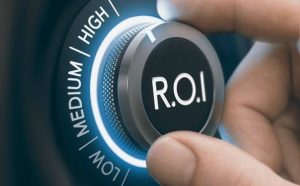 When the batteries die in your remote control, do you just throw it in the garbage and buy a new one? No, of course not! You replace the batteries, which enables you to save money and enjoy better and faster service from your remote. The same can be said for providing training for existing workers. It’s so much more cost efficient to consistently train the employees you already have than having to find new workers.
When the batteries die in your remote control, do you just throw it in the garbage and buy a new one? No, of course not! You replace the batteries, which enables you to save money and enjoy better and faster service from your remote. The same can be said for providing training for existing workers. It’s so much more cost efficient to consistently train the employees you already have than having to find new workers.
When it comes to training existing team members, many agencies come up with every excuse in the book not to move forward. And it’s one of the costliest mistakes they can make. Here are just some of the top reasons why so many agencies don’t take the time to train workers:
- Training takes a lot of time
- Training is expensive
- Fear of ineffective training or lack of a standardized training program
- Fear of workers leaving after they’ve received training
So many agencies are ignoring the real question: what is the cost of not training employees? It’s easy to see training as an expense and not as an investment. Failing to continually train workers leads to a host of issues, including increased security risks, decreased efficiency, more mistakes and a lack of motivation. Untrained and unhappy employees who feel like they’re not building their skills are more apt to become frustrated and may start looking for employment elsewhere. And we all know how costly turnover can be!
On the flipside, training and development programs include a host of benefits, including enhancing employee performance, boosting employee productivity and improving department culture. But getting started is the first (and most challenging!) step. Don’t let the old excuses hold you back. Leah M Joppy and Associates can work with you to create consistent training programs or improve the ones you may already have in place. Call us at 301-670-0051 or email leah@lmja.com to learn more.
Providing Adequate Training
 When was the last time you provided training to your existing team members? Some of you may be able to answer this question quickly – “oh, we did some training and development about six months ago.” But if you’re like most, you’re probably scratching your head trying to remember the last time any training took place. It’s a common issue. According to the “Top Management and Performance Challenges Facing Multiple Federal Agencies” report released by the Council of the Inspectors General, providing adequate training is a key area of concern.
When was the last time you provided training to your existing team members? Some of you may be able to answer this question quickly – “oh, we did some training and development about six months ago.” But if you’re like most, you’re probably scratching your head trying to remember the last time any training took place. It’s a common issue. According to the “Top Management and Performance Challenges Facing Multiple Federal Agencies” report released by the Council of the Inspectors General, providing adequate training is a key area of concern.
Where are we seeing this? It seems to run rampant. The Department of State (DOS) reported that under qualified staff developed, “deficient performance work statements that led to multiple poorly designed projects and millions of dollars in wasted funds.” The Defense Intelligence Agency (DIA) stated that sensitive information was put at risk because they had failed to provide employee training programs. Those are just a few sobering examples. Quality training is such an integral workplace component. Here are just a few ways reasons why:
- Addresses Employee Weaknesses: Training programs enable you to strengthen employees’ existing skills and address areas that need improvement. Efficiency and productivity are increased. Employees can work better independently and in teams without constant supervision.
- Improves Employee Job Satisfaction: No one likes to feel confused and out of the loop when they’re at work. Consistent training builds skills, knowledge and confidence. It also makes employees feel like they’re valued and supported. If an agency is willing to make an investment in their workers, those workers are probably less likely to jump ship for another job.
- Eliminates Wasted Money and Addresses Security Concerns: As mentioned earlier, a few agencies reported poorly designed projects due to a lack of proper training, as well as sensitive information put at risk. The Defense Intelligence Agency specifically noted that providing a standardized training program could help them in “identifying, assessing and mitigating counterintelligence risks to mission-critical acquisitions.”
Don’t make the mistake of forgetting about training or putting it on the backburner. Agencies must ensure that workers are continually kept up to date with policies, processes and procedures. A structured training program ensures that employees have consistent learning opportunities and a chance to build knowledge and skills. Leah M Joppy and Associates can work with you to look at your current training programs, what’s working and what isn’t and address and fix any weaknesses. Call us at 301-670-0051 or email leah@lmja.com to learn more.
